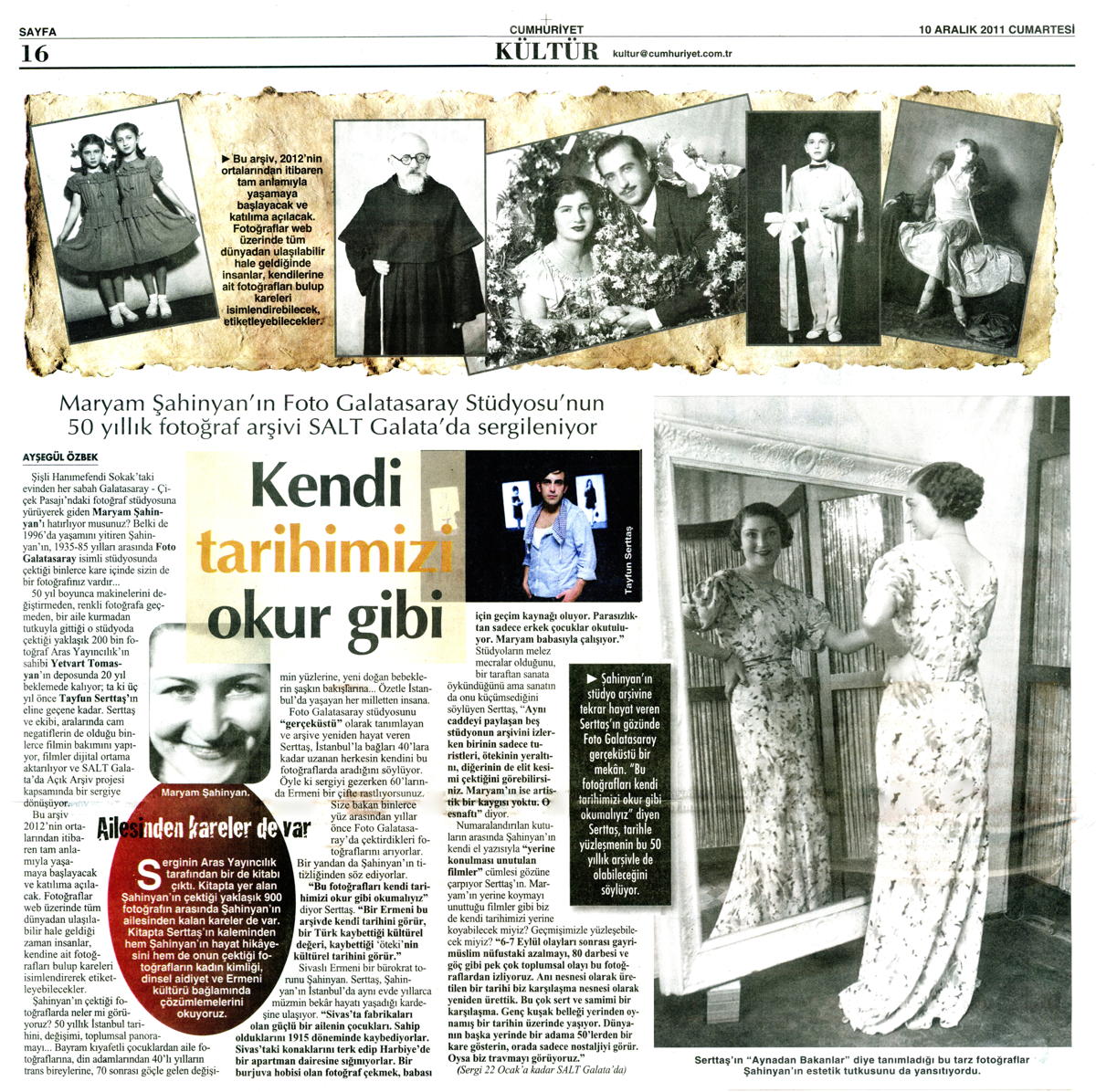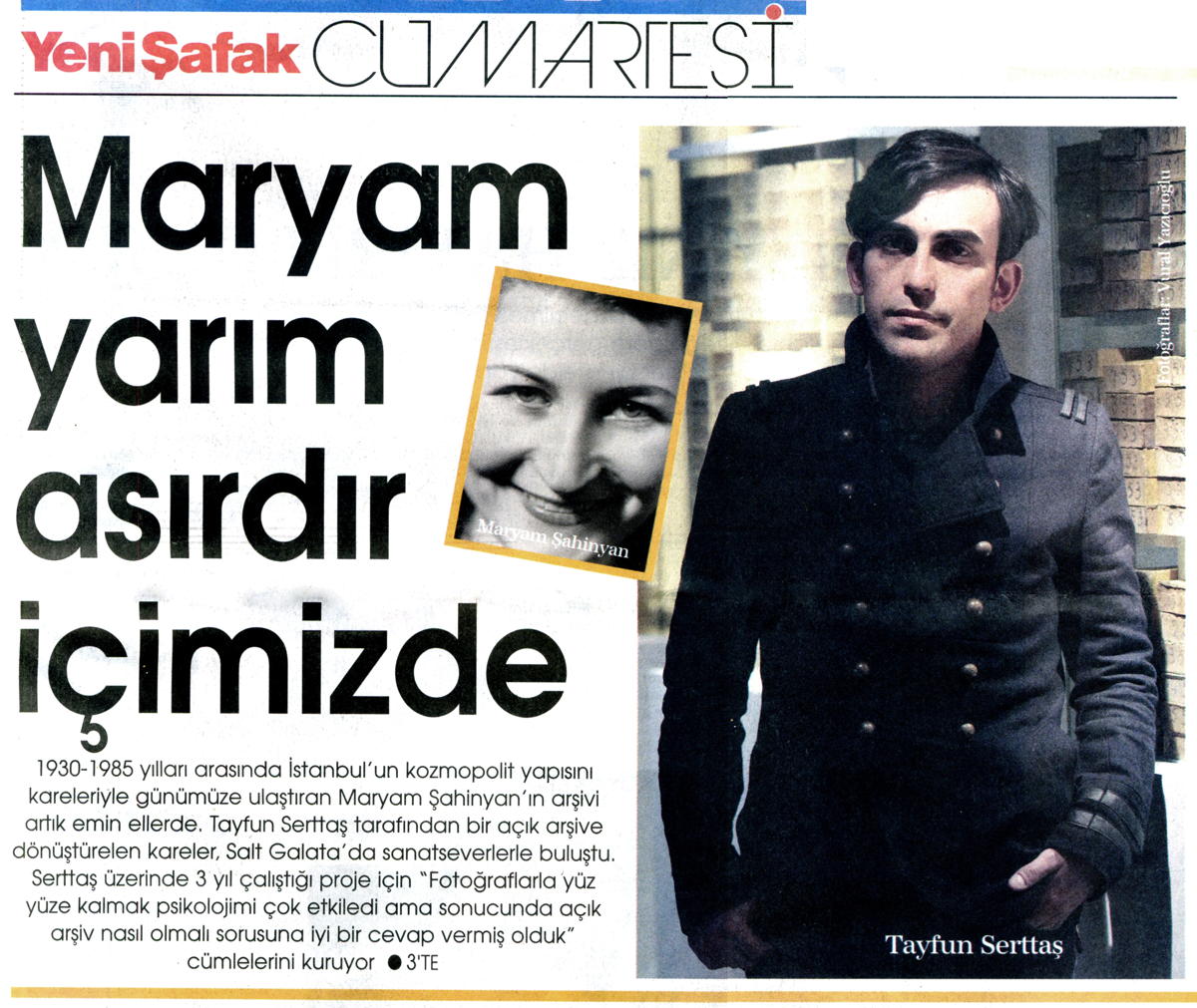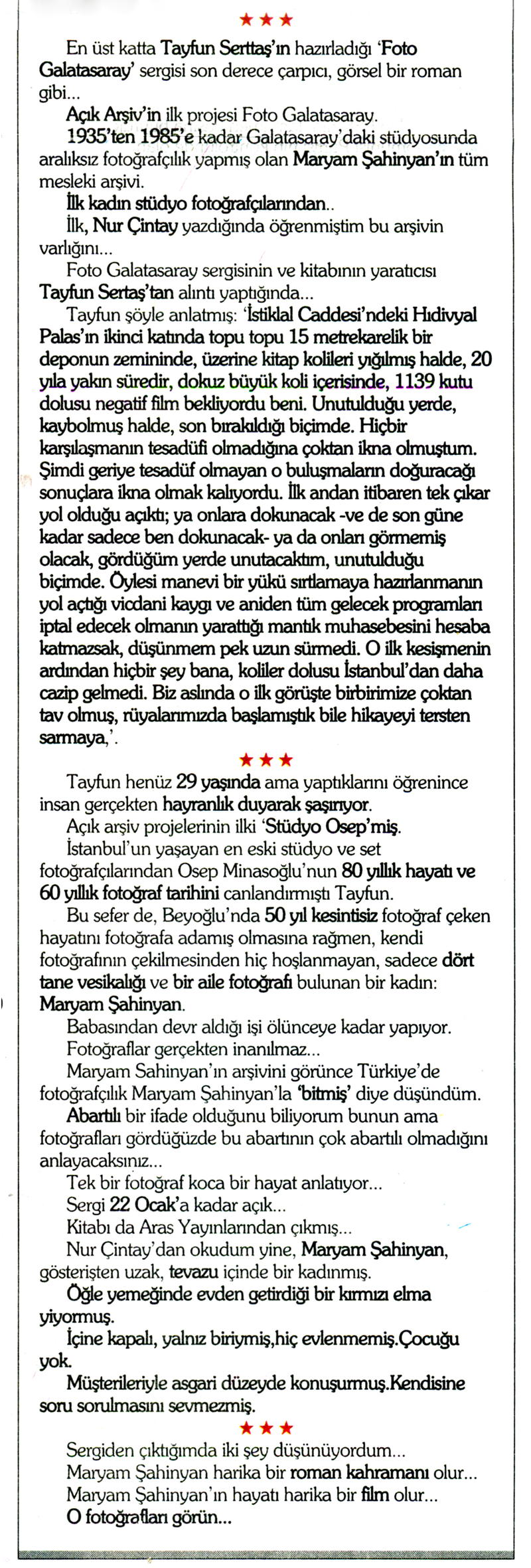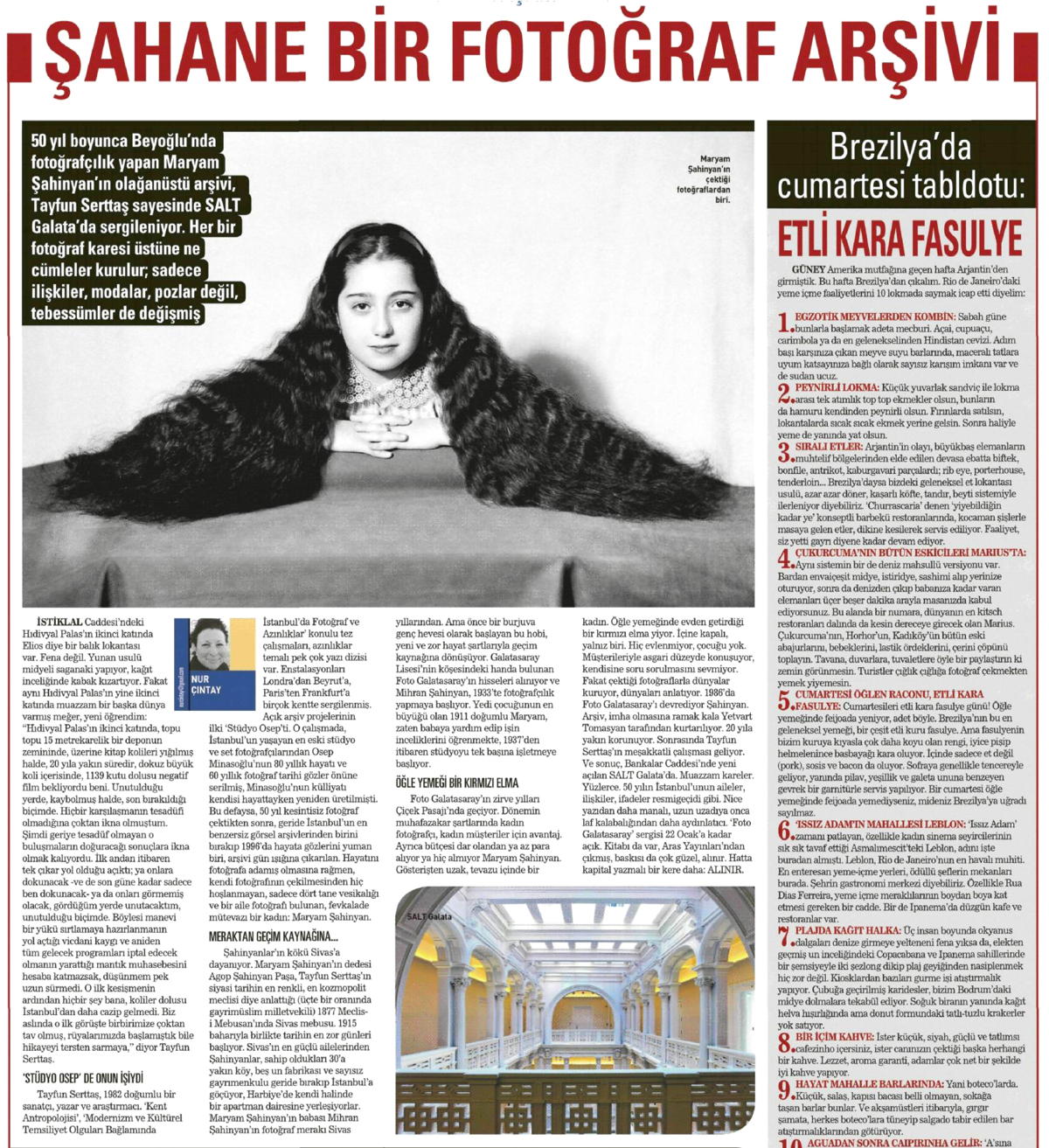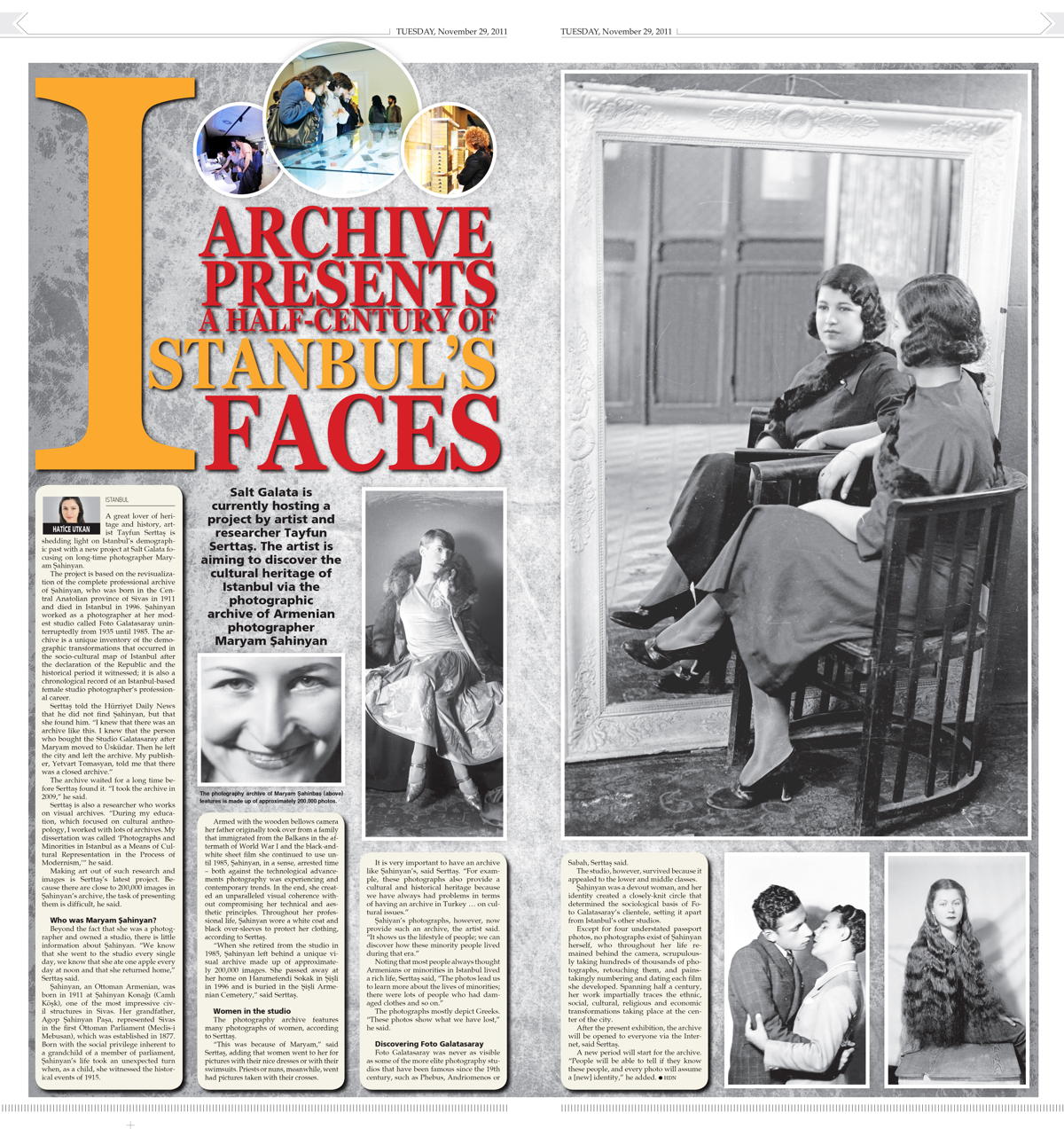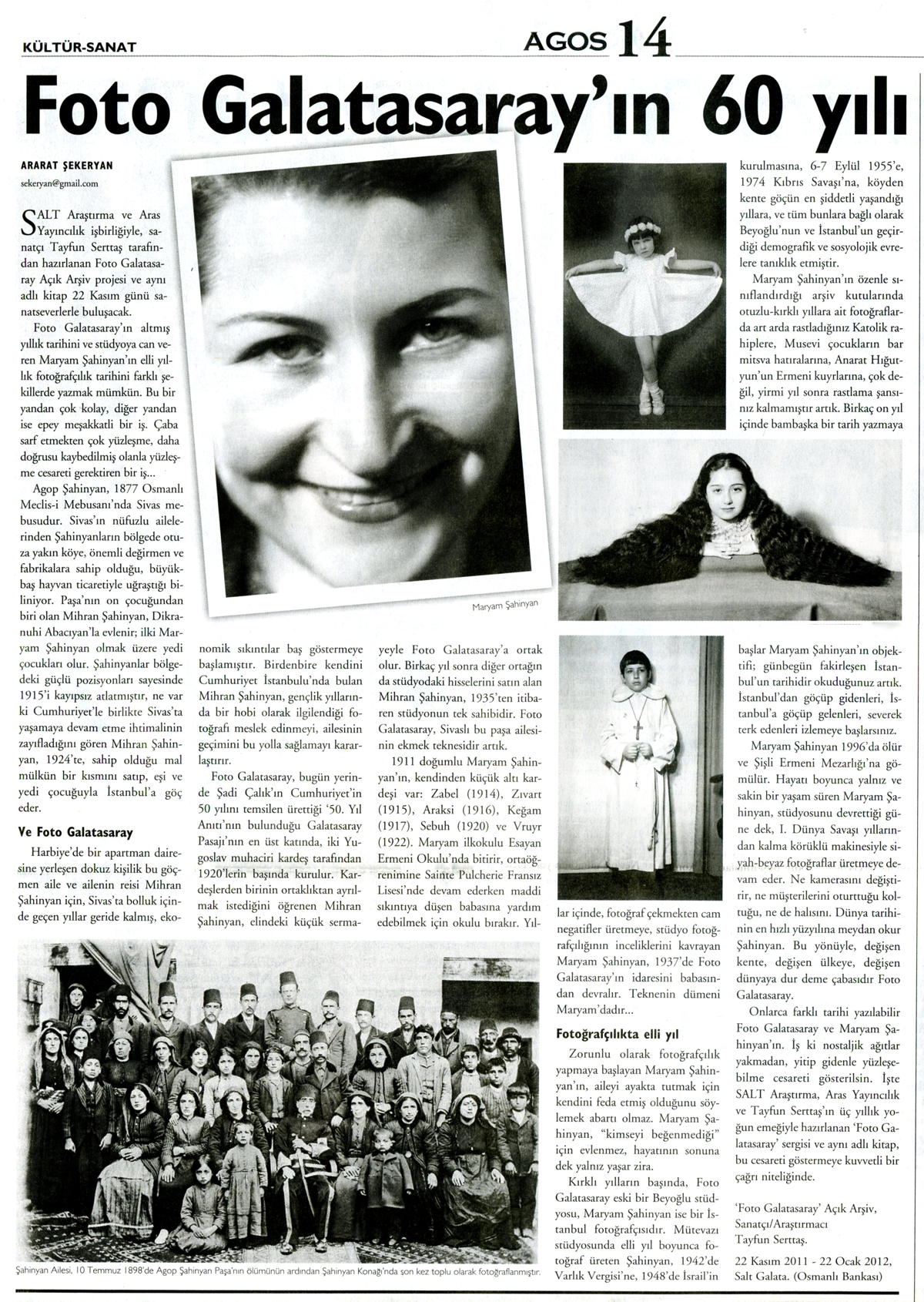Indivisible Singleness, Crowded Loneliness
for Maryam and Tayfun
by Karin Karakaşlı
When I was growing, my mother would take me to Foto Atlantis on my birthdays. I remember very vividly the hellish moments of fear in the dark studio, the lights that appeared over my head and Master Keğam who would disappear behind that odd instrument when I was four, five. I would call this calm man who would also document my teary moments, Keğam Dayday, meaning “Uncle Keğam.” We could also call this a call of help – the sound of a moment extended to eternity. This calling would foreshadow crying fits that would end in sobs. But was it possible for Keğam Dayday to have mercy? He would give me one of the toys that he saved for moments of emergency. I would look at the horse that would rock back and forth where I put it, sniffing. There was no solution, that streak of lightning would explode. And they would say the same thing again, “Don’t move!”
In later years, I learned to love this family ritual. When I was in mischievous poses, Keğam Dayday would frequently come out from under the machine’s cloth and come over to where I was. He would often adjust my head to the right or left and lift up my chin. What remains from him is precisely that touch – with his thin, skilled hands.
What does a person do when they are most affected by something? They immediately bang it into fragments of their own story. When I stepped into the universe of Maryam Sahinyan’s photographs, I immediately thought of the moments I spent with Master Kegam. All of a sudden, with a bang… Foto Atlantis should also have an archive, of course. What did happen to these photographic records when the shops were closed?
Realizing that the Armenians were involved in photography since the times of the empire, what was surprising about Maryam Sahinyan’s being a photographer was not that she was Armenian, but that she was dedicated to this profession as a woman and that she stubbornly spent half a century in that studio, starting 1935.
Could you even dare to imagine the photographs that were possible in Galatasaray – a most cosmopolitan neighborhood of İstanbul – for over fifty years? Furthermore, imagining that this change could exist between an ottoman and a wood chair… How many people would sit on an ottoman over fifty years, how many people would stand next to that ottoman? It is thus that the ottoman and the chair become coordinates; they define the latitude and longitude of life.
Maryam is obviously not a judgmental woman. She made those sitting across from her comfortable. Maybe this is why I liked her so much. In 1971, a young hippie woman who ties her tight shirt right under her breasts, wears her bell-bottom pants, celebrating freedom, is followed by a modest, conservative family portrait. It is obvious they just came to the city from the country. The woman has an embarrassed smile. She is holding on to her purse tightly. Her long, flowered skirt is obviously her best outfit. On her feet are shoes that are worn-out but recently polished.
Maryam really likes long hair. She lets young brides’, little girls’ hair down on their shoulders like capes. It is as if she whispered a secret into their ear, “Don’t hide this beauty, love this thick hair.” The hair is thus transformed into a part of the outfits and a precious jewel. And the women whose hair has been appreciated start to look different. They like the selves that they see at that moment, as they are, however they are.
Across from me is a woman, with a cigarette in her hand, lying on the ottoman. How did Maryam know that this woman could lie on the couch as such? Or this upright man… Did Maryam also tell him to look like that, to stand like that?
I really wish I could touch that wooden chair just once. It is a chair that has seen a lot, it has a karma. It is a harbor of life where a lot of lives have come and gone. Babies have either sat on that chair or they stood up. Some of the women are barely sitting on the chair, some men are leaning back comfortably. When there are crowded families, the chair becomes almost invisible. There are some who stand awkwardly, indecisively stand between the chair and the ottoman, putting a shy hand on the back of the chair, exposing this chair in its full glory.
Maryam loves siblings. She poses them with their heads leaning towards each other. You can trace the genetic history in this geography of faces. Where does one end, where does one begin. You know about the sustainability of life through those siblings.
Maryam loves the different possibilities of life. Priests, nuns, patriarchs, archbishops have given themselves over to her able hands. Looking at it from one perspective, the photographs are an archive of spiritual figures. İstanbul’s truly cosmopolitan diversity is fully manifest in the thousands of images, probably due to Maryam’s position in the city as well as the trustworthiness she must have exuded. Children who were baptized and circumcised, students of schools for the minorities, Levantines, Greeks, Armenians, Jews flow before your eyes. The saddest and most magical thing is this: You deduce these things from the details in the photographs yourself. The studio’s record book is lost, there is no name nor notes available. You find the people yourself, shrouded in ambiguity. Possibilities of life, lost.
Maryam loves brave, natural people. She takes pictures of families, but each family is posed differently in the photographs. In a photograph dated 1980, a woman is sitting in her husband’s lap with their son next to them. I stare.
Maryam opens up herself and her lens to other lives. There is a woman who is wearing an equestrian outfit, looking proud and there are military officers, in their brand new uniforms. There are women who posed in their bikinis and underwear; there are artists from groups of ballet dancers or performance troupes.
Maryam loves little girls. One of her favorite poses is to have them put one foot in front of the other, standing up, holding their bell-shaped skirts. How many of these girls are there over fifty years, positioned somewhere between angels and butterflies? I can’t know, it would take a life time to look at, classify and organize all of Maryam’s photographs.
There is another pose where flower girls hold up their flared skirts on two sides. There are women who pose in front of panoramas, in long skirts.
What is the secret behind these poses? Is it the search for the content, despite the flow of time? On the karmic chairs are women who look like they are about to get up, followed by roughnecks surrounded by their crew. A young man has his jacket over his shoulders. Did Maryam put that there?
Maryam loves confrontations. She insists on having women faced with mirrors. The women’s images deepened in the mirror. I can’t say they are multiplied for certain actually. They are just deepened, increased. I can make eye contact with the woman who is staring at the mirror directly. Another has her head tilted in front of the mirror. I watch the woman who is bent over twice, looking at herself.
The photographs are exemplary stories of demographic changes. After a point, there are five-in-one-coins instead of cross necklaces. Instead of men wearing fedoras and coats, with gelled hair, there are man wearing their best jacket, reserved for the bayram, with their hair parted from the side and combed moustaches – timid men from Anatolia. Instead of women with fur-collared coats, silk gloves, hats with wide rims, tulles, scarves, there are women with head scarves, flower-patterned dresses, pants and jackets. Maryam accepts life as it is. Thus, everyone is in their most beautiful form that they would like to present to the world. This effort in and of itself liberates the stock poses.
I’m thinking about who Maryam would look at in a flowing crowd. Was there anyone that she couldn’t stop looking at? I decide on a beautiful man who was in a most unexpected photograph. In his poses are a intimacy, a sharing, which are just different. This young man has a shining smile, thick hair, warm, childish eyes, a lean body – image of a mortal immortal. It is as if he posed with anyone, whenever Maryam wanted. And Maryam knew this uniqueness.
I look for my own mortal immortals. My grandmother and my grandfather… They also have warm poses, leaning on each other, similar to the young couples’ poses in Maryam’s pictures. They were taken by others, but I keep thinking that I’m going to happen on their photographs in Maryam’s archive. It must be that this pose belongs to this era; it is a common taste that doesn’t start nor end with Maryam. I hear Ahmet Hamdi Tanpınar’s timeless, spaceless poetry when looking at these people.
I’m neither inside time,
Nor completely outside;
A large, single moment
In the undisrupted flow.
These photographs are all indivisible singlenesses. They are fragments of life within themselves. I remain with a sense of loneliness. It is a feeling of loneliness among crowds. Maybe it is the same feeling that Maryam had when she closed the doors to her studio and went to her house. Maybe it is the photographs’ struggle to remain independent, to exist out- side of the photographer and the subjects.
In the color of a dream
Every shape is numbed,
Even the feather drifting in the wind
Is not as light as I am.
Even us – showered with images every day – used to the modern times… We are fooled by the unique crowdedness of these photographs. We are looking at frozen moments, at times that will never flow in the same way. Those times were the most natural for some, it was an unquestioned and known way of life. At one point, our indispensable photographs will be dispersed into the whirlpools of objects, destined for places we cannot even predict. Looking at frozen moments reminds one of death. This where that feeling of indivisible singleness comes from. That stark reality where there isn’t even anything to fear. The soul calms down with this realization.
My head advising silence
The eternal mill;
Inside me has reached my wish
A bare-backed dervish.
Everyone spins on their own axis. Then they feel peccable circles in their lives. That realization triggers a decision. In hand, old photographs. What should be done? Unknown roads are taken with the fatal force derived from old photographs. You put up the photograph of an older family member that you feel close or that of someone you don’t know but feel a soul affinity for, on your bedstand. You have a new beginning, inspired.
An ivy whose root I have
Is the world, I can feel it.
Blue light
In which I swim.
When I close my eyes, I see tens of people on that chair and ottoman, flowing in front of my eyes, like a sequence from a movie. Then I see myself. I’m in Maryam Sahinyan’s studio. Maryam takes off the hair pins from my hair. She brushes my hair for a long time. When was the last time someone else brushed my hair? I’m numbed. I direct myself towards the chair, she stops me. “You go on this ottoman.” She gently pushes me to the back. I’m wearing a long black dress. She fixes the skirt, the hems, the collar. She makes me cross my arms over the ottoman, I lean my head against my arms. Her head appears for one second from behind the camera. She brings that mirror to my side. From the opposite side is a woman with her head leaning on her arms. She turns my head to the right a bit and lifts up my chin. “That’s it, stay like this.”
I stare into the lighting that strikes.
İstanbul, June 2011
* ‘Indivisible Singleness, Crowded Loneliness’
by Karin Karakaşlı, Serttas T, Foto Galatasaray – Studio Practice by Maryam Şahinyan, Istanbul: Aras Publishing; November 2011. pp. 16-20
